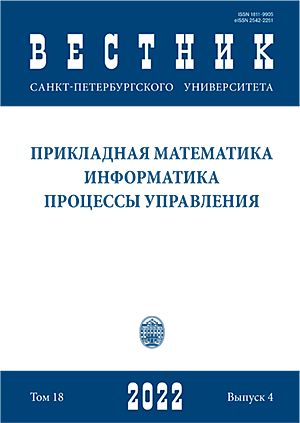Рабочие группы: создание и управление
DOI:
https://doi.org/10.21638/11701/spbu10.2022.414Аннотация
В современном менеджменте одним из наиболее популярных и эффективных подходов к организации деятельности является создание временных рабочих групп. Важным показателем служит эффективность таких групп, которая сильно зависит от внутренней структуры рабочей группы и взаимоотношений между членами коллектива. Для эффективного функционирования группы необходимо, чтобы группа состояла из лидера и подчиненных. Искусственное назначение руководителя группы часто оказывается неэффективным. В статье решается задача разделения коллектива на рабочие группы с учетом взаимоотношений между отдельными персонами. Предложены два алгоритма: первый разделяет коллектив на отдельные группы возможных лидеров и подчиненных, второй составляет эффективные рабочие группы. Эффективность группы рассчитывается на основе ee функции эффективности, которая принимает во внимание межличностные связи. Для проверки адекватности модели были проведены практические и численные эксперименты.
Ключевые слова:
рабочие группы, матрица смежности, алгоритм иерархической кластеризации
Скачивания
Библиографические ссылки
Загрузки
Опубликован
Как цитировать
Выпуск
Раздел
Лицензия
Статьи журнала «Вестник Санкт-Петербургского университета. Прикладная математика. Информатика. Процессы управления» находятся в открытом доступе и распространяются в соответствии с условиями Лицензионного Договора с Санкт-Петербургским государственным университетом, который бесплатно предоставляет авторам неограниченное распространение и самостоятельное архивирование.





